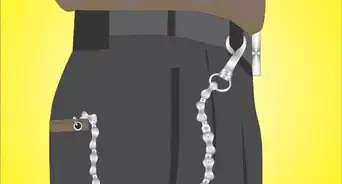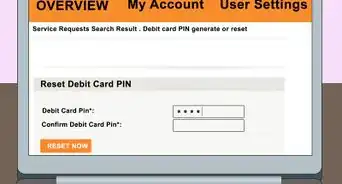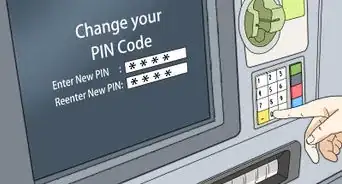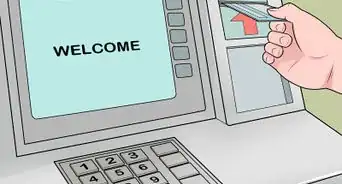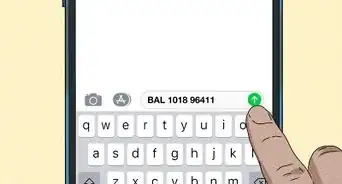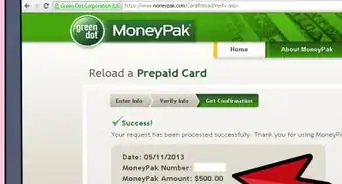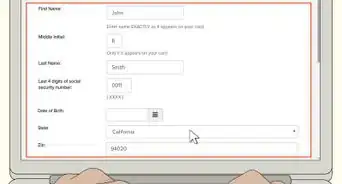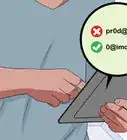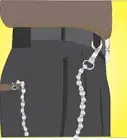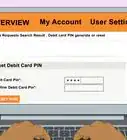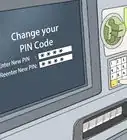This article was co-authored by Michael R. Lewis. Michael R. Lewis is a retired corporate executive, entrepreneur, and investment advisor in Texas. He has over 40 years of experience in business and finance, including as a Vice President for Blue Cross Blue Shield of Texas. He has a BBA in Industrial Management from the University of Texas at Austin.
This article has been viewed 186,992 times.
The bank tells you to be careful about tearing up the PIN that they send you with a new card. But did you know that there are more things that you can do to protect your number and ensure that nobody tries to use your account? Debit cards are very attractive to would-be thieves because immediate cash is always more desirable than goods on a credit card. Here are some additional, simple steps for you to take to protect your PIN (personal identification number).
Steps
Choosing a Good PIN
-
1Choose a PIN password that is not obvious. Your birth date, wedding anniversary, phone number, and home address are obvious picks, so just do not use them. Instead, think of numbers unrelated to major events and addresses in your life to create your PIN.[1]
- One technique that works for PINs is to divide them into two groups of two digits and treat each as a year - so that, say, 8367 becomes 1983 and 1967 - and then find some event that corresponds to each year. Each event should be something personal, known only to you, or something historical but relatively obscure. From these, devise an amusing and odd phrase linking the two events, from which the events themselves, and thus the dates, cannot be easily deduced. Write down this phrase rather than the PIN itself.
- Another way to create a PIN that is also easy to remember is to translate a word into numbers (like on a telephone keypad). Ex: Wiki would be 9454. ATM keypads often have letters printed alongside the numbers.
-
2Vary your PIN on different cards. Don't keep the same PIN for all your cards. Have a different PIN for each one, so that if you do happen to lose your wallet, it will be much harder for the PINs to be cracked.
Keeping Your PIN Private
-
1Never share the PIN. It might be tempting to trust a friend or a family member with your PIN but it is not a good idea. Circumstances can change and sometimes, people perceive a need more greatly than maintaining your trust or worst still, a person you do trust might be placed in a compromising position with a third party and be obliged to reveal your PIN under harassment or threat. It is better not to put this to the test, ever.
-
2Never give out your PIN in response to e-mail or telephone requests. Phishing scams are unsolicited e-mails asking for bank account details, passwords and PINs. Delete them without a second thought and never respond to them. Your real bank will never request personal banking details through an email.[2] Also, never provide your PIN over the telephone; there is never a need to do this and it will always be a fraudulent request.
-
3Shield your PIN when using it. Use your hand, a checkbook, a piece of paper etc. to shield the PIN as you enter it into a bank machine or a store machine. Be especially vigilant in store queues, where somebody may be paying more attention than you.[3] Also, be wary of "card skimmers" at ATMs; they use scanners run over the card slot to lift debit card details and they find your PIN details via camera or looking. If you shield your PIN input well, they are hampered in their attempt.[4]
-
4Do not write your PIN down on the card, ever.[5] Do not even write it in a diary. If you must write it down, disguise it in some way or put it somewhere totally unrelated to the card, such as in the middle of Shakespeare's Complete Works.
Deterring Theft
-
1Monitor your account for suspicious activity. Be diligent about regularly checking your bank statements to make sure no unauthorized transactions have been made using your card. Most banks will contact you if they suspect any transactions are fraudulent, but it's always a good idea to check your statements personally and on a regular basis. If possible, check your account online rather than waiting for paper statements.[6]
-
2Contact your bank immediately if your card is stolen or lost. Tell them immediately if you think that there is anything that may compromise your PIN, such as an easy PIN, other ID in your wallet making it easy to work out or, horror of all horrors, the PIN being written down somewhere in the wallet or on the card. Get the bank to cancel the card immediately.[7]
-
3Be proactive. If you suspect any fraudulent activity using a card still in your possession, apart from notifying the bank and the police, have your PIN changed immediately.
Warnings
- Do not worry about keeping your debit or credit cards near magnets; the pull of the magnet will not demagnetize the cards or wipe any information from them. However, directly wiping them with a very strong magnet along the magnetic stripe will erase them or damage the data.⧼thumbs_response⧽
- Use the same ATM for more security, and keep an eye on it's surroundings eg: pin pad height, there's a difference around the monitor or something new added to the machine in case there's a skimming fraud going on. If in doubt contact the bank in charge of that ATM.⧼thumbs_response⧽
- Don't pay any attention to those who tell you never to sign the back of your card. Should the card be recovered, if there's no signature on the back, then the merchant is not required to refund your money... Since there was no way for the employee to determine that the person holding the card was not you, any signature given (when the card is used as credit, not debit) is considered valid.⧼thumbs_response⧽
- Keep in mind that if you do allow someone to borrow your card and PIN, the bank has the legal right to deny you a refund should the card be compromised. This is considered lack of due diligence on your part to protect the information.⧼thumbs_response⧽
- Contact your bank immediately if an ATM "eats" your card. This is possible evidence of the ATM being used in skimming fraud.[8]⧼thumbs_response⧽
- Never write your PIN on a postcard or outside of an envelope.[9]⧼thumbs_response⧽
References
- ↑ http://www.scotiabank.com/ca/common/pdf/ways_to_bank/Protect_Your_PIN_Brochure.pdf
- ↑ http://www.usatoday.com/money/perfi/columnist/block/2005-05-09-debit-cards_x.htm
- ↑ http://www.bankrate.com/finance/savings/4-tips-to-protect-you-from-atm-thieves-1.aspx
- ↑ http://www.usatoday.com/money/perfi/columnist/block/2005-05-09-debit-cards_x.htm
- ↑ https://www.citicards.com/cards/wv/html/cm/be-protected/fraud-prevention/keep-your-credit-safe.html
- ↑ https://www.citicards.com/cards/wv/html/cm/be-protected/fraud-prevention/keep-your-credit-safe.html
- ↑ http://www.scotiabank.com/ca/common/pdf/ways_to_bank/Protect_Your_PIN_Brochure.pdf
- ↑ http://usatoday30.usatoday.com/money/perfi/columnist/block/2005-05-09-debit-cards_x.htm
- ↑ https://www.citicards.com/cards/wv/html/cm/be-protected/fraud-prevention/keep-your-credit-safe.html
-Safe-Step-4.webp)
-Safe-Step-6.webp)
-Safe-Step-1.webp)
-Safe-Step-2.webp)
-Safe-Step-3.webp)
-Safe-Step-5.webp)
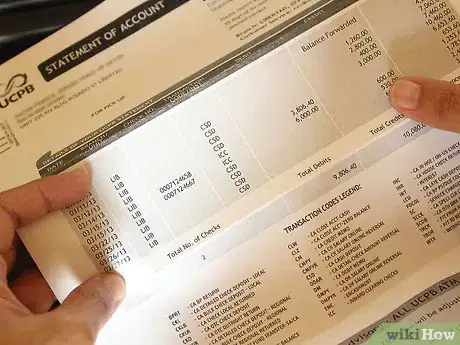
-Safe-Step-7.webp)
-Safe-Step-8.webp)

